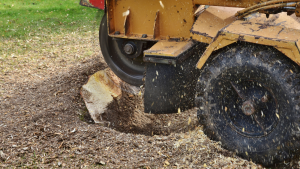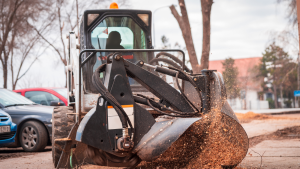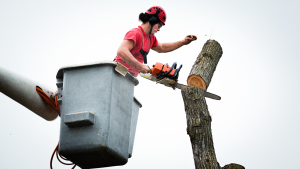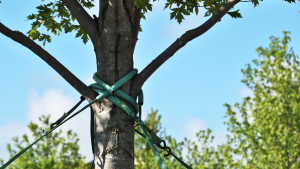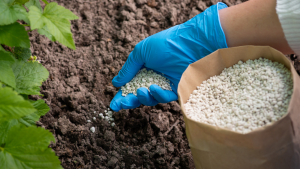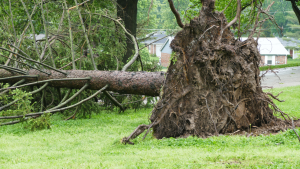Can I Prune My Trees in the Winter?
Throughout the winter, when the trees are dormant, tree pruning can be a very significant tree care technique, depending on your aims. It may seem as though trees can be ignored during the colder months, especially since they require less water and receive plenty of rain.
You will be guided through our winter pruning advice in this post, which covers when, how, and why to prune your trees.
Pruning vs. trimming
Although tree trimming and pruning eliminate growth from a living tree, they are distinct from one another and have different goals.
Trimming a tree involves removing healthy growth for ornamental reasons, or it may involve reducing the interior to allow a little more light.
Tree pruning: To maintain the health of the tree, dead, harmed, or diseased limbs are pruned back or eliminated. In order to accomplish a certain goal, pruning typically refers to a more selective approach to branch removal or reduction.
What Makes Pruning Important
Pruning should be done correctly and regularly as part of tree maintenance. By completing this one task, you can benefit the tree, enhance the appearance of your property, lower your danger of a fire, reduce your risk of infestation and illness, and lower your risk of failure.
You can improve the tree’s beauty and correct the balance to assist prevent breakage, especially in fruit trees, by pruning the tree’s shape and structure. Constricting, overlapping branches can also be resolved by thinning the canopy of the tree.
3 Winter Tree Pruning Tips
While good winter tree pruning promotes a tree’s health, incorrect or excessive pruning might harm a tree. Follow these three recommendations for effective pruning:
1. Tree Pruning Timing
The short answer to the question of when to prune trees in California is almost whenever. When trees are pruned while dormant, it can be less stressful on the tree, and, for deciduous trees, it is much simpler to see and reach the limbs because the leaves aren’t in the way.
Although almost all trees can be pruned at any time, the timing of treatment may matter in some situations. The ideal time to prune each type of tree on your property can be determined by an arborist.
2. When Should You Prune
The majority of trees benefit from being pruned every three to five years to help preserve their health and structure, though every tree will have different demands. The type and age of the tree will determine how often you should prune. It’s recommended to consult a certified arborist regarding a pruning program for your particular trees.
3. How to Prune
It’s simple to get carried away while shaping a tree and removing dead branches. But, a longer perspective is preferable, and you should only remove the tiniest amount to get the ideal result. If the trees on your new property haven’t been properly pruned in years, fixing the damage all at once could endanger the tree.
In such circumstances, numerous trimming cycles can help it get a little bit closer to its ideal shape and condition. When removing material from a tree’s crown, care should be taken because here is where the majority of the tree’s leaves are found, which it needs for photosynthesis.
The fundamentals are listed below, divided into the two most typical goals.
Taking branches out
You should cut a limb several inches away from the trunk if you’re going to remove the entire thing. But, keep in mind that you might need to do it in phases if the tree is enormous to avoid adding unnecessary stress.
For each limb you cut off, you must make three cuts as follows:
- Saw roughly a third of the way in from the underside of the limb, about 12 inches from the branch collar.
- Place your saw on the branch’s top about an inch further out, and saw downward until the branch collapses.
- As the limb is no longer being torqued by your weight, you can perform a precise downward cut between the sawed end and the branch collar.
By using this technique, the cut is made as cleanly as possible, protecting the branch collar and surrounding bark.
reducing and forming
Depending on the size of the limb, you’ll require loppers or pruning shears when dealing with the smaller branches to promote new development and shape the tree. Just past a healthy growth bud or the point where the branch joins a larger one, make a 45-degree cut. Make the bottom of the incision almost flush with the bud while leaving a terminal point that is about 1/4 inch above it.
Trust Joliet Tree Service with Your Trees for Pruning and More
It could be a little frightening to perform your first tree pruning. Knowing that improper or excessive trimming might harm the tree is very important. The trained arborists at Joliet Tree Service have been offering knowledgeable tree trimming services to home and business owners in Joliet for more than 25 years if you would want to entrust this crucial operation to a professional. Our objective is to keep the trees on your property healthy and attractive while reducing the likelihood of wildfires or other potential damage from fallen trees in our neighborhood.
Call (815) 476-3395 or send us a message online to get a quote for our specialized and individualized arborist services.

